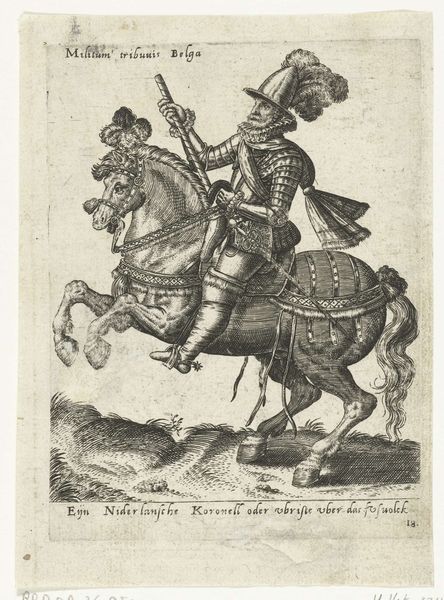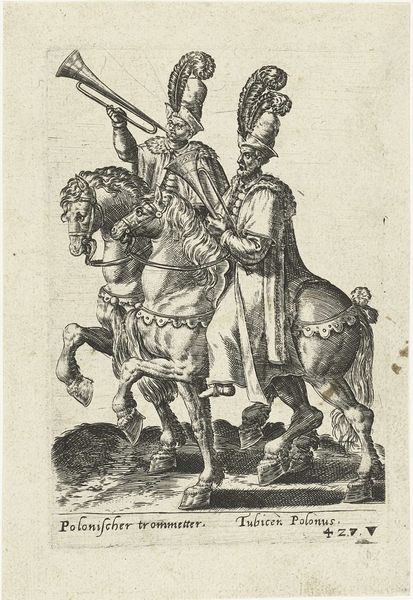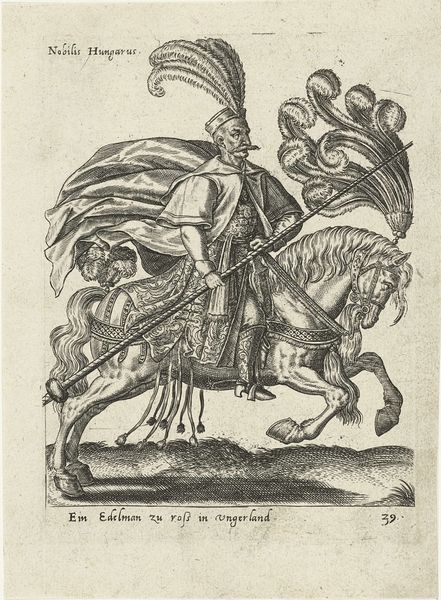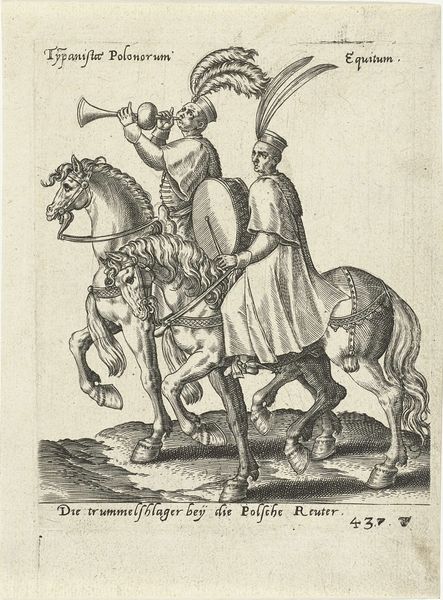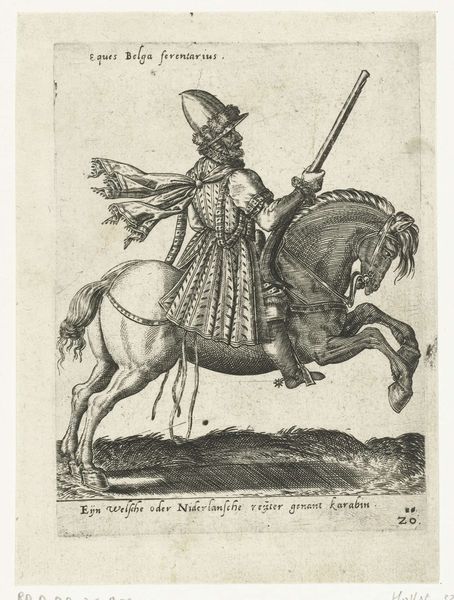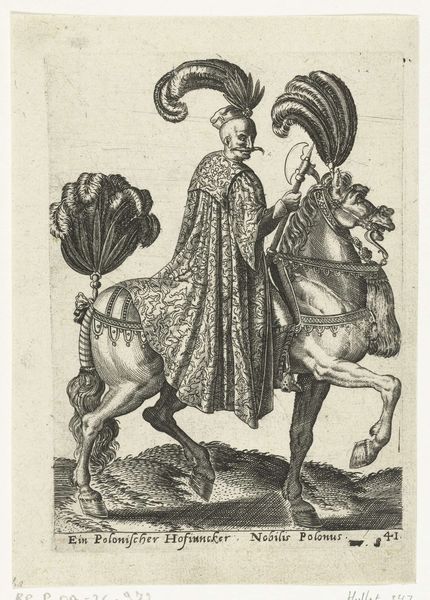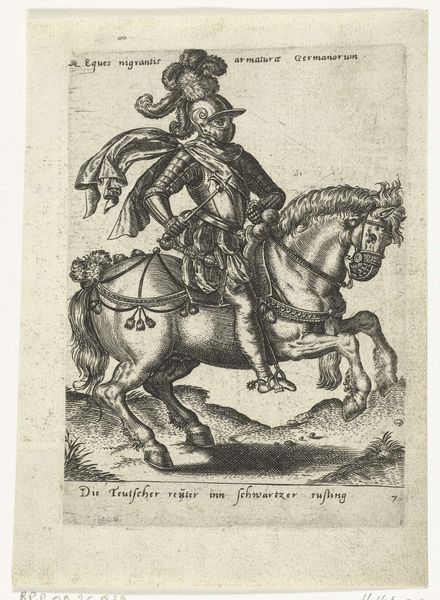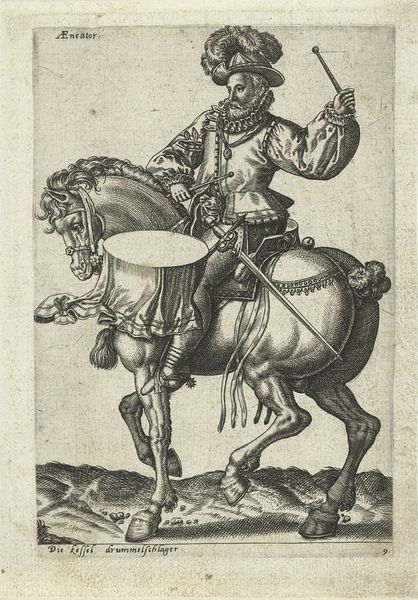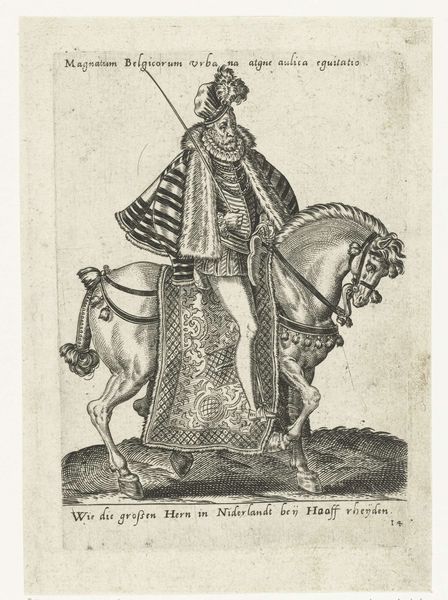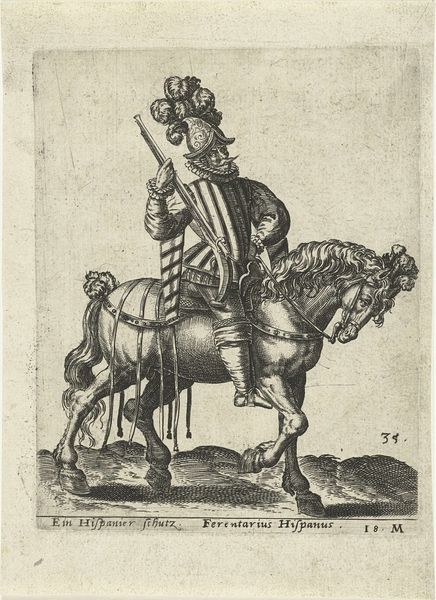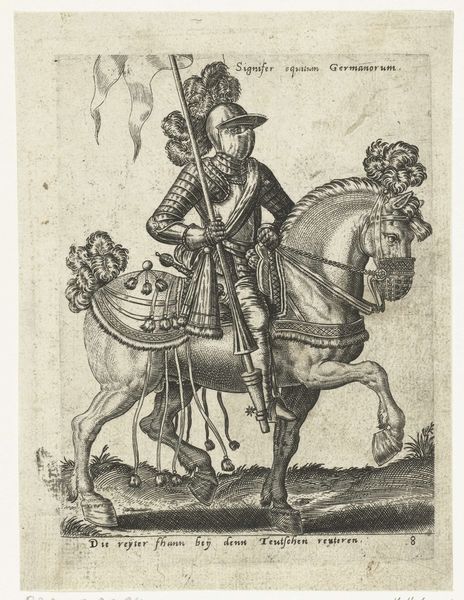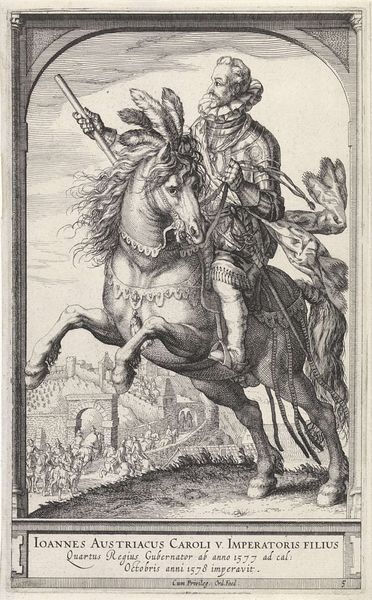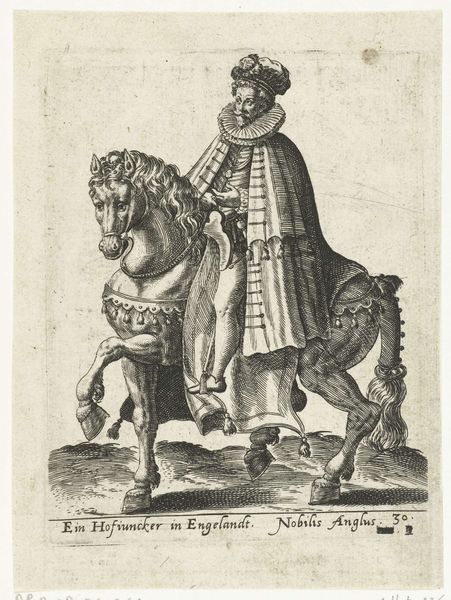
print, engraving
#
portrait
# print
#
figuration
#
11_renaissance
#
history-painting
#
engraving
Dimensions: height 142 mm, width 112 mm
Copyright: Rijks Museum: Open Domain
Editor: Here we have "Poolse Ruiters," or "Polish Riders," an engraving by Abraham de Bruyn from 1577. It's quite striking—the riders' elaborate costumes and the horses' postures are so meticulously rendered. What do you see in this piece from a formalist perspective? Curator: From a formalist viewpoint, the emphasis is placed on the elements of the image. Consider the linear precision of the engraving technique itself. Each stroke defines form and texture, creating a dynamic interplay of light and shadow. Editor: It’s amazing how much detail he gets with just lines. Curator: Indeed. Look closely at the composition: two riders, slightly offset, creating a sense of depth despite the flat picture plane. Notice also how the textures of the riders' clothing contrast with the smooth flanks of the horses, adding visual interest. Editor: I see what you mean. The contrast in textures makes each figure distinct. The way the artist uses different strokes in the rendering also indicates that he prioritized texture. Curator: Precisely! De Bruyn manipulates the medium to draw your eye through contrasts of form. Do you notice anything about the weight distribution, the figure's arrangement? Editor: It seems stable, grounded… a deliberate decision, perhaps, to convey power? Curator: Consider how that stance relates to the surface textures created through etching: one smooth, one textured. Weight is suggested by both of these together. The lines dictate everything here; there’s something monumental conveyed purely through these aesthetic elements. Editor: So, by analyzing these intrinsic aspects, we can appreciate the work’s artistic intent without relying on historical context. Curator: Exactly. The engraving itself is the primary source of meaning. We observe how visual form communicates power, elegance, and the character of these riders through technical excellence. Editor: I’ve always thought of formalism as limiting, but I see how deeply one can engage with a work simply through its internal visual language. Curator: It is through meticulous study of these lines and compositions that true formal meaning emerges.
Comments
No comments
Be the first to comment and join the conversation on the ultimate creative platform.
